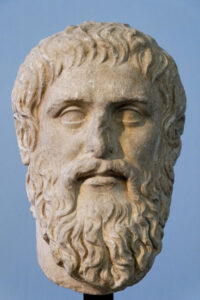

What are the seven liberal arts? The 7 traditional liberal arts are the subjects that were outlined by Plato in his work The Republic, thought to constitute all the essential skills and fields of knowledge required by a free, well-educated citizen. They are:
- Grammar
- Logic
- Rhetoric
- Arithmetic
- Astronomy
- Music
- Geometry
We think of liberal arts today as a very broad field, encompassing all arts and sciences, and defined more by a style of enquiry, dialogue, and interdisciplinary knowledge than by the particular subjects being studied. But all of those broad fields of knowledge that we explore in liberal studies today grew out of a traditional set of 7 complementary subjects that philosophers and teachers felt were vital for free citizens to master.
From the very beginning of liberal arts education, there was a basic toolbox of skills and knowledge that were taught to create a foundation for continual learning.
It wasn’t that the Greeks really thought you could just stop at 7 subjects and call it a day. Instead, it was that these 7 subjects were thought to give you the abilities to tackle just about any other kind of learning you might face in life. Whether that was inventing democracy or writing plays, it didn’t matter—you had everything you needed to bootstrap your own education after you’d mastered these 7 subjects.
The History of The 7 Liberal Arts

Plato sort of kicked off the whole 7 liberal arts thing by listing them as part of the core education offered in his Utopian work The Republic.
The 7 liberal arts comprise the trivium and quadrivium: a set of 3 core skills, taught first, followed by 4 more advanced subjects.
Plato wasn’t breaking new ground with the trivium; most well-educated Greeks would have pursued those studies in his era. The quadrivium were all subjects that were understood and taught broadly, as well. Instead, Plato’s innovation was in defining these subjects as not just the ideal for education in general, but as a necessary part of educating what he referred to as the philosopher-king, an idealized description of an individual who leads in society from a place of love and wisdom.
In Plato’s great work The Republic, the philosopher-king was to study the 7 liberal arts for basically all of their lives, until age 50, to impart the wisdom and skills required to rule the Republic justly and maturely.
As democracy emerged, however, it soon became clear that every citizen was in part a king. So as the Romans embraced the ancient philosophies, they explicitly put the trivium and quadrivium together as the appropriate style of education for all free and sovereign citizens of the Roman Republic. In fact, the terms themselves are Latin, not Greek.
- Trivium: Latin term for the meeting place of three roads.
- Quadrivium: Latin term for the meeting place of four roads.
As the Western world emerged from antiquity, the trivium and quadrivium were embraced by medieval scholars and universities as the ideal form of advanced education. The trivium was the requisite course of study for bachelor’s candidates, while the more advanced quadrivium formed the core of a master’s education.
Today, the 7 liberal arts have become many, but the roots laid by history continue to influence what you study in a liberal arts degree program.
The Trivium Invokes Arts of the Word
The basic education required to participate in society revolved around what have come to be called the arts of the word.
Grammar – This art encompassed studying written works and the forms of writing. This often happened through memorization and reading of classical texts. Learning and diagraming the parts of speech became common, and other language-related knowledge like spelling and vocabulary have grown out of grammar studies.
Logic – Logic studies in the trivium were not the formal, mathematical courses that logic studies have become today, but were instead rooted in dialectic: a discussion and investigation of truth and opinions. This is the root of today’s liberal arts mainstay, discussion and seminar-style courses, as well as the more formal fields of modern philosophy and logic.
Rhetoric – Rhetoric was closely associated with logic studies in the trivium, since it involved learning how to express opinions and make arguments in dialogue. It would also have been a clear outgrowth of grammar studies, where students were expected to absorb, analyze, and discuss the arguments laid out in the classical works they were reading.
With these three basic tools of reasoning and expression, students were considered to be competent to go on to study other, more complex topics.
With the skills in dialogue and logic, students were equipped to reason their way in any other kind of field—a skill that is at the very heart of liberal arts.
The Quadrivium Teaches the Arts of Numbers
The quadrivium were the more advanced studies that students would have moved on to after mastering the trivium. These 4 subjects all revolve around math, leading to them being called the arts of numbers.
Arithmetic – The basic operations of mathematics and numbers forms the basis for the other arts of the quadrivium. Addition, subtraction, multiplication, and division, as well as mathematical notation was studied.
Music – Musical studies are less widespread today across liberal arts, possibly because they have become more specialized. But in the original quadrivium, it was considered important that students understand the forms and instruments of music, both for appreciation and creation. Today, music has broadened in to all types of artistic expression.
Geometry – Geometry in the quadrivium would have had far more practical applications and studies than we associate with the term now. Yet those practical applications, in architecture, surveying, and engineering, have emerged as their own dedicated disciplines and remain important core skills for liberal arts students today.
Astronomy – The contemplation of the heavens and humankind’s place in them received more emphasis in an era where less was known and more was imagined than today. Astronomy was at first considered essential for fields such as navigation and determining dates, but grew to include more advanced mathematics and physics studies. These are natural sciences that are still important in liberal studies today.
Modern Reflections of The 7 Liberal Arts in Liberal Studies Degrees
There are still some liberal arts degrees that focus on offering a classical education according to the 7 liberal arts of the trivium and quadrivium. Most liberal studies majors take the ancient program of study more as an inspiration than a format, however.
You can see the incorporation of all of these subjects in educational programs right down to the kindergarten level in modern Western society. The 7 liberal arts have had a lasting impact on how we think about education and what it means to be educated.
In liberal studies degree programs, you’ll find that most of your core courses are outgrowths of the original 7 liberal arts. More importantly, the style of learning reflects the kind of structure and dialog that was implicitly created by the trivium and quadrivium. All that was seen as important to the creators of the 7 liberal arts remains important to liberal arts instructors today.
Groundwork in self-expression, critical analysis, and rational inquiry prepare students today for acquiring more advanced knowledge. We have a lot more of that knowledge now than the Romans or even Medieval Europeans had, but much of it remains an outgrowth of their spirit of investigation and methods of logic and reason. It’s true to such an extent that even in the vocational and professional degree programs of Western colleges, you’ll still find required coursework in the 7 liberal arts and their descendants.






